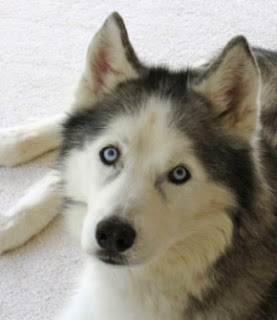By Julia Williams
As a writer, nothing makes me happier than finding out that the words I’ve penned have made a difference. Whether it’s an article that helped a pet owner, or ad copy that effectively communicates a product's attributes, I am always thrilled when my contribution has a positive impact. I think every person who loves what they do feels the same, and so does every company who loves their product.
CANIDAE is no different. This family-owned company was founded out of love for pets and the desire to provide the finest natural nutrition for them. Every heartfelt testimonial CANIDAE receives from a customer is another affirmation that what they’re doing is working. I’m sure it makes them proud, as it should.
I wanted to share one such testimonial and a follow-up with you today. It’s about two beautiful dogs who will be CANIDAE customers for life. Why? Because the food made a difference in the dogs’ lives. And like I said, that’s what it’s all about.
The Original Testimonial
“We love our boxers like family. Tuckerman came to us from a breeder in March 2008. He was very thin, and was a picky eater. Getting him to eat on a regular schedule and put on some needed weight was a challenge. We searched in vain for a food that both met our expectations for nutrition and quality ingredients, and that Tuck would enjoy. We found that food in CANIDAE ALS.
 About 8 months later we rescued Layla, who was also quite thin. Her previous owners advised us that she was not a big eater and was picky. A bag of the food they were feeding came with her. No wonder she wasn’t a big eater – a cursory glance at the ingredient list and quick sniff test, and that junk food was trashed. She went on CANIDAE immediately and it turns out Miss Layla is a total foodie! In fact, it was a challenge to keep her from stealing Tuck’s breakfast and dinner daily.
About 8 months later we rescued Layla, who was also quite thin. Her previous owners advised us that she was not a big eater and was picky. A bag of the food they were feeding came with her. No wonder she wasn’t a big eater – a cursory glance at the ingredient list and quick sniff test, and that junk food was trashed. She went on CANIDAE immediately and it turns out Miss Layla is a total foodie! In fact, it was a challenge to keep her from stealing Tuck’s breakfast and dinner daily.That was 3 years ago, and to this day they both finish their meals in record time and are always looking for more. Moreover, both dogs are at ideal weights for their breed, have beautiful coats, sparkly eyes, and bright white teeth. CANIDAE has transformed skinny, picky puppies into robust, nourished and thriving athletes. Thank you CANIDAE!” - Josey, Darrin, Tuckerman and Layla























